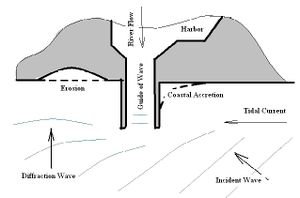Input-output matrix
draft version
An Input-output matrix is a representation of national or regional economic accounting that records the ways industries trade with one another, as well as produce for consumption and investments.
Input-output matrix is constructed on the simple idea that goods and services produced by economic sectors should be registered in a table simultaneously by origin and by destination (OECD, 2006) [1] ). Commodities are produced by economic sectors (e.g. cotton produced by agriculture) and they serve as inputs in other sectors in order to produce their final products also called outputs (e.g. manufacturing industry such as textile industry using cotton from agriculture as input to produce its own output, i.e. clothes in cotton). Better said, the purchase of agricultural output by manufacturing is for use as inputs in producing manufacturing output. Such purchases are part of what is known as intermediate demand, which term refers to inter-industry transactions, i.e. goods and services bought by firms from other firms and used up in current production (this corresponds to Domestic intermediate matrix – see first quadrant in Tableau 1). The outputs are delivered to the final demand sector that comprises purchases by individuals for consumption, by firms for investment (in fixed capital such as machines, buildings, etc.), by government, and by foreigners (exportations) – this corresponds to the fourth quadrant in Tableau 1 called Domestic investment matrix. The use of this terminology “final demand” simply indicates that purchases by this sector are not for the purpose of use in production (Common and Stagl, 2005). In addition to intermediate inputs mentioned above, firms use also primary inputs. Those are services which are not bought from other firms but from individuals : these services are known as factors of production. These refer to wages and salaries as payments for labour services, interests paid on borrowing, rent paid for the use of equipment, building and land, profits paid for the entrepreneurship that is the function of organizing and risk-taking (Common and Stagl, 2005) – this corresponds to the second quadrant in Tableau 1, which is called Imported intermediate products matrix. We are not going to detail the third and the fifth quadrant here since they are not essential to the global understanding of the methodology. For more details, look at the legend of Tableau 1 go to OECD (2006) and read pp.7-9.
Tableau 1 shows an example of a real input-output matrix for Belgium in the year 2000. The columns represent the destination of inputs, and the rows sum the output of a sector.
As you can see, only the total outputs (last line called industry output) are shown, not the total inputs. This is because such data is not necessary since the total inputs equal the total outputs. Normally, this total appears in the last column of the table.
References
- ↑ OECD (Organisation for Economic Co-operation and Development), 2006. Input-output analysis in an increasingly globalised world: applications of OECD’s harmonized international tables. STI/Working paper 2006/7. Statistical analysis of Science, Technology and Industry. 31st August. Available on Internet : http://www.oecd.org/dataoecd/6/34/37349386.pdf
- ↑ OECD (Organisation for Economic Co-operation and Development), 2006. Input-output analysis in an increasingly globalised world: applications of OECD’s harmonized international tables. STI/Working paper 2006/7. Statistical analysis of Science, Technology and Industry. 31st August. pp. 12-14. Available on Internet : http://www.oecd.org/dataoecd/6/34/37349386.pdf
